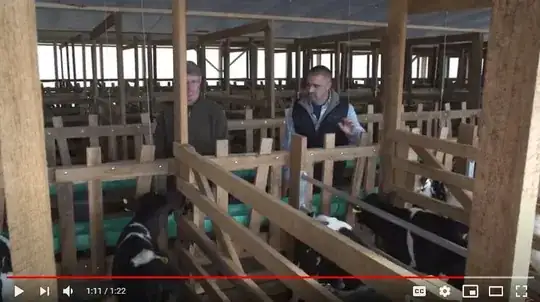Snopes rates that particular picture as a fairly misleading "veal hutch" which isn't actually used like that.
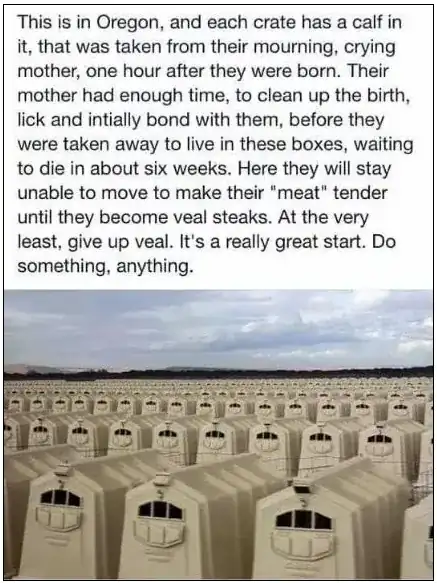
What’s pictured here are not crates in which calves are imprisoned within an hour of their birth, condemned to spend their entire lifespans stuffed into little boxes that don’t even provide them enough room to turn around in order to keep their meat “tender” before they’re marched off to slaughter after only six weeks. (Veal calves are typically raised for 16 weeks, not six.) This photograph actually shows calf hutches that are used to house calves being raised for dairy (not veal) purposes, and those hutches provide plenty of room for calves to turn around and as well as attached runs so that the calves can spend time outdoors.
More photos follow on Snopes, among which one that has seemingly the exact same 3-window pattern to the hutch, but seen from the inside. I guess this one is intended to prove there's "plenty of room for calves to turn" in those hutches:
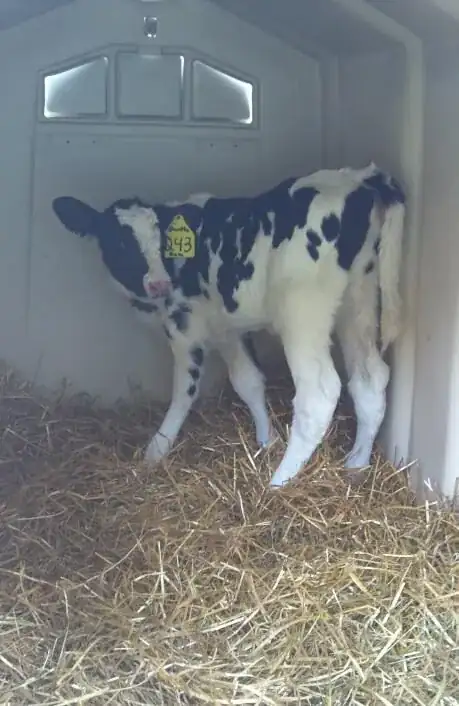
There are more photos with the outside wire pens attached and if you look closely at claim photo you can see the wire pens in that one as well, except that the hutches are shot from the back, so the pens are on the far side.
Also a bit more image searching finds the same ribbed-pattern hutches (with the three inner ribbs a bit closer to each other than to the out two) but shot from opposite angle; and this one has the calves in the image for relative-scale perspective; the calves in this photo seem more mature:
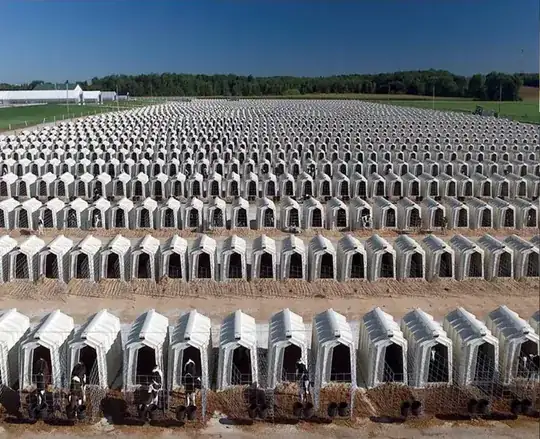
As far as the purpose of such a practice goes, the USDA itself recommends in a 2007 document (p. 63) that:
Housing for unweaned calves should provide a dry area with shelter that does not allow contact with other calves or older animals, especially. Hutches or individual
animal pens usually are recommended for unweaned calves.
Sure there are some recommendations or regulations for minimum sizes etc., as OP's own answer details.
And in a (much later) section that is detailed to be for "biosecurity" (disease prevention) reasons:
Newborn calf risks and contact with other cattle
Separating newborn calves from their dams soon
after they are born helps prevent disease
transmission that can occur through nursing or
contact with adult cow feces in maternity areas.
Milk from dams infected with Mycoplasma,
Salmonella, E. coli, Mycobacterium avium
subspecies paratuberculosis, or BVD can
transmit these diseases to calves (Wells, 2000;
Nielsen et al., 2008). Feeding preweaned calves
pasteurized milk, milk replacer, or milk from
known disease-free cows is recommended.
The percentage of operations that separated
newborn calves from their dams immediately
after they were born doubled from 1991 to 2007
(28.0 to 55.9 percent of operations,
respectively). In 2007, 22.2 percent of
operations allowed calves to nurse from their
dams but removed them from their dams less
than 12 hours following birth. In 2007, about
two-thirds of calves (65.6 percent) were on
operations that removed calves from their dams
immediately following birth. Less than 1 of
10 operations (7.3 percent)—representing
2.6 percent of calves—allowed calves to stay
with their dams for more than 24 hours.
Keeping preweaned calves separate from older
animals is an effective way to reduce their
exposure to disease. Preweaned calves are more
susceptible to disease than older, healthy
animals because their immune system is not yet
fully developed (BAMN, 2001b). Physical
contact between preweaned calves and cattle
from older age groups (including nose-to-nose,
sniffing, touching, licking, or contact across
fence lines) increases the risk of exposing the
calves to diseases such as salmonellosis, Johne’s
disease, and upper respiratory diseases.
The percentage of operations in which
preweaned heifers were not exposed to weaned
calves, bred heifers, or adult cattle increased
from 1996 to 2007.

Whether this common US practice has some other deleterious side-effects
because individual housing "lacks physical and social stimulation, limiting calves' ability to perform natural behaviors" has been
investigated in some papers,
but we're getting a bit far afield from the claim here.
Interestingly, in the UK, since 2018 Tesco has banned the use of single-calf hutches for its suppliers, citing some papers like the above, i.e. they require that calves be reared at least in pairs from day one.
There are actually precious few illustrations of what a "veal crate" looks like (or looked like, before the various bans). I found a fairly credible one on the website of an organization that fought for their ban in the EU. (The ban was adopted in 1995, but had 12-year grace period, becoming fully effective in 2007.)
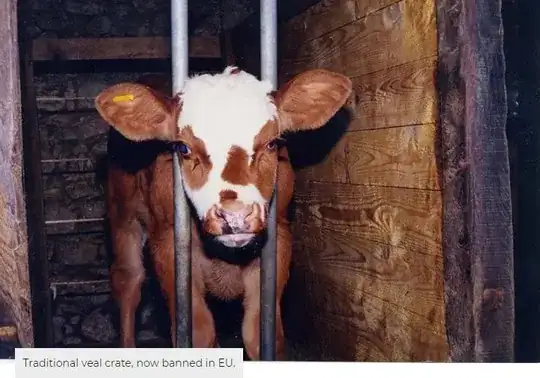
Also on the EU side, you could look at video of a contemporary (2017) "veal shed" in the Netherlands. Similar video of a US veal farm (2019). Individual indoor pens for young calfs can be seen briefly.
